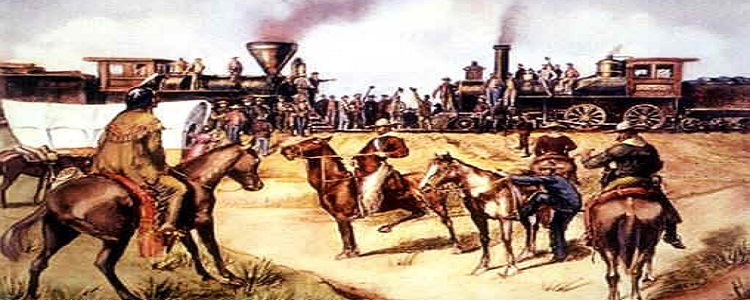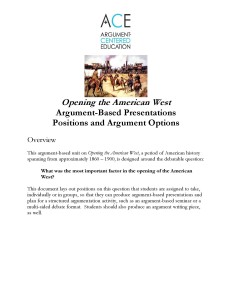
Argument-Based Presentations on the Opening of the American West
Peirce International School humanities teacher Tiffany Brugman and Argument-Centered Education have collaborated on the argumentalization of the school’s Opening the American West unit. We wished to share it out as another demonstration of the argumentalization process and the ways that it can generate student inquiry, critical thinking, college-directed argumentation skills, and communications exercise and growth.
It starts, as regular readers of The Debatifier know, with the formulation of the debatable issue(s). For this unit, the issue is formulated as a question:
What was the most important factor in the opening of the American West?
We identified five major factors — the transcontinental railroad, the Homestead Act, oppression of the Native Americans, the Gold Rush, and big business — and students, with Ms. Brugman’s guidance and support, formulated positions that they would be tasked with defending during the unit. Students again devised argumentative claims, which we tweaked and added to, producing a set of argument options for students to research, inquiry further into, choose to develop, or use as models for the construction of their own argumentative claims.
Students are now writing, assembling, submitting for review, and revising presentations using an argument-based presentation template and planning guide.
You’ll notice if you click on and download the template and planner that it asks students to draw on evidence that is visual or textual — Ms. Brugman wants students incorporating video, audio, photos, and paintings, where such media provide evidence to support arguments that develop and defend the overall position that answers their debatable question at the core of the unit.
You’ll also notice that the template and planner includes a refutation slide, in which students have to identify the strongest counter-argument to their position and refute it. Argument-Centered Education understands the term “refutation” broadly: whenever a writer or speaker is denying that the counter-argument is an absolute negation of their argumentative position they are, in effect, refuting it, even (or especially) when they are conceding some portion of it, only to reject another portion more damaging to their argument. Refutation is one of the five key components of all rigorous argument-centered instruction.
Students are, as we said, immersed now in their presentation creation and construction. They will be assessed for both argumentative content and for communications-based presentational aspects (a topic to be taken up in future by The Debatifier). Then students will engage each others’ views in either an argument-based seminar or a multi-sided classroom debate format. Students will end the unit with a short, direct, content-rich, and thinking-laden argument for the factor that they think drove Westward expansion above the others, hopefully weighing and evaluating the competing causal explanations and the evidence for them clearly and critically. That, anyway, is the very latest argument-centered instructional plan — the implementation for which we continue to refine in collaboration with our school and teacher partners.



